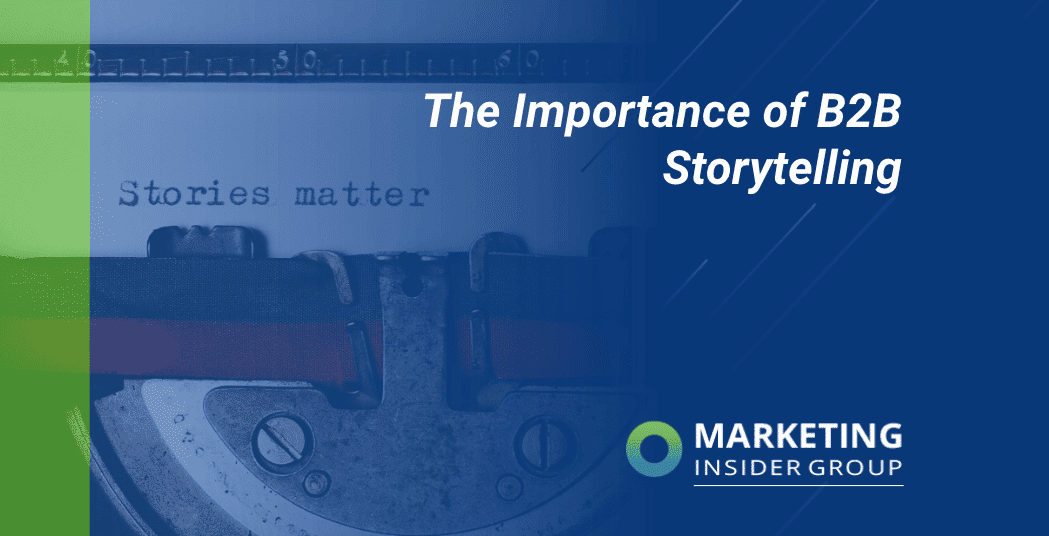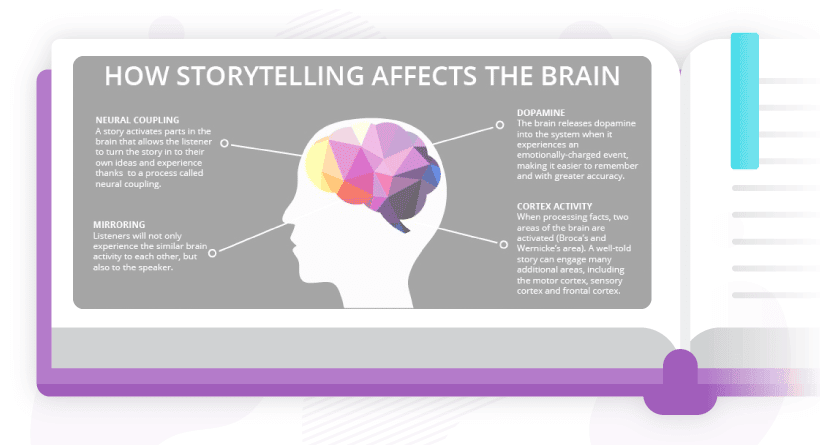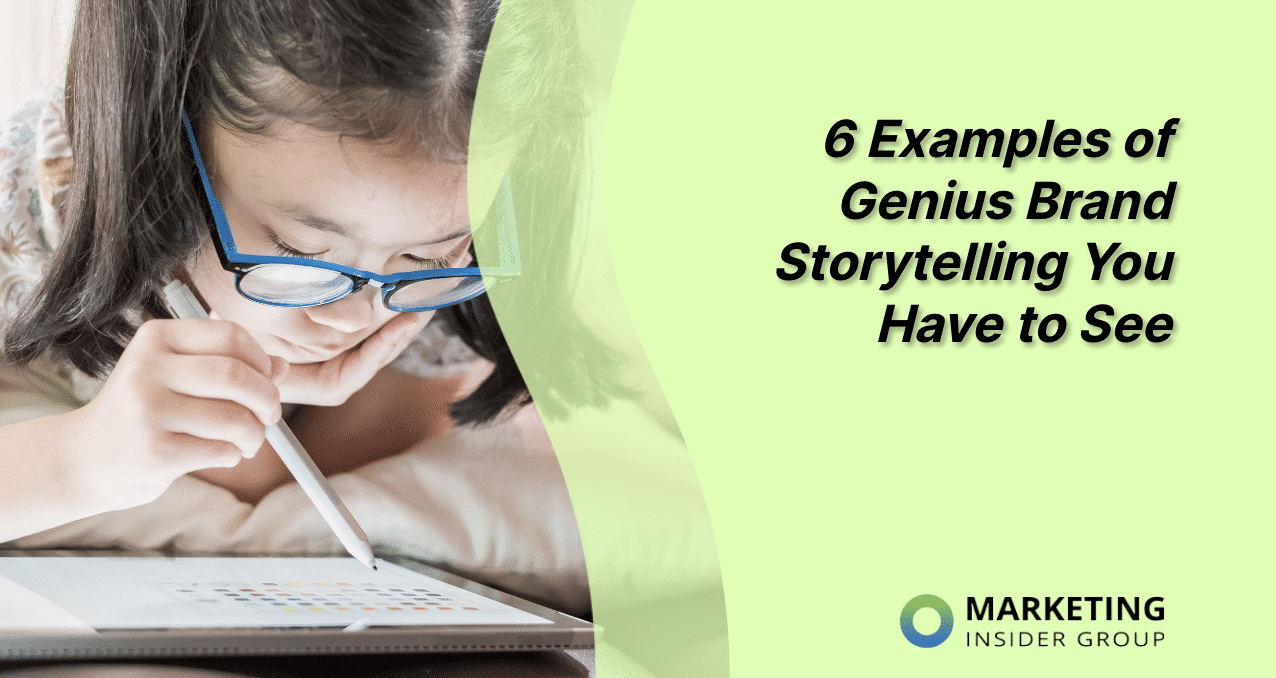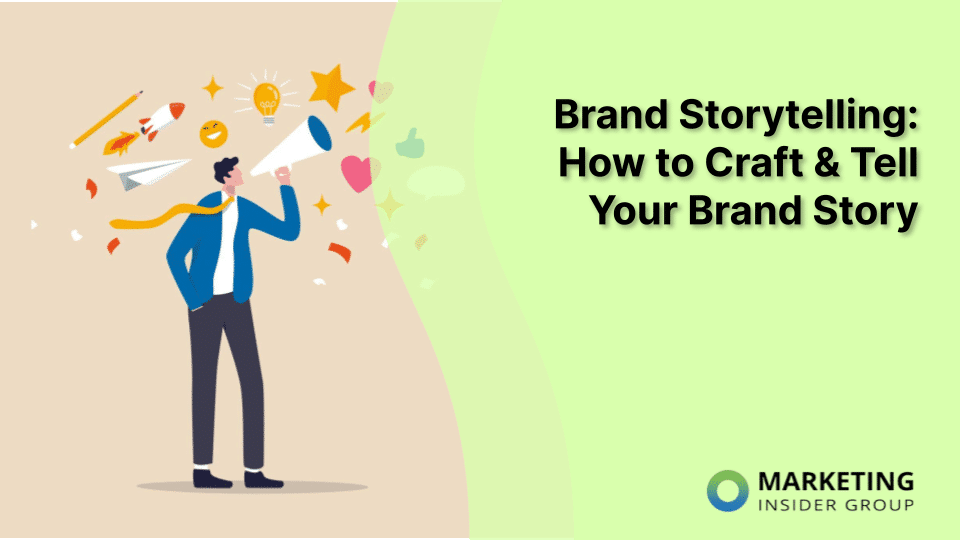
The Importance of B2B Storytelling
Telling and listening to stories comes naturally to people across the globe. From ancient to modern times, storytelling has remained a constant throughout the evolution of the human race.
Stories in different forms get passed from one generation to another and exist across various channels in multiple iterations. There are simple, linear ones and stories with dizzying complexity and both types keep bringing interested audiences back for more.
Storytelling works because people have the innate desire to learn about certain developments that might be relevant to them. As humans we’re on a constant quest for knowledge and stories help us satisfy the urge to learn and be entertained. The best stories allow their audiences to immerse themselves completely, focusing solely on the story’s universe.
Over time, people have learned that one story can be molded and transformed across a bunch of different platforms. Each storytelling format has its pros and cons, and great storytellers have learned how to maximize every platform’s strengths to benefit their cause.
Quick Takeaways:
- Stories have a specific structure. This means you can align them with your B2B customer journey.
- Storytelling bypasses the need to pitch or a hard sell.
- Storytelling brings out the emotions and psychology involved in B2B sales.
Why Storytelling Is Powerful
Storytelling provides an alternate reality, especially if it is fiction. Meanwhile, nonfiction stories, particularly the successful ones, are read because they motivate and inspire. People buy into stories because of our inclination to make sense of everything.

We use stories to build connections between related concepts through what we’ve learned and experienced, which in essence means engaging our audiences in a way that’s both surprising and familiar to them. Storytelling is a powerful tool for marketing, but let’s take a look at why it works from a psychological standpoint:
-
Form of Communication
Putting types and platforms aside, storytelling shares information. The main purpose of storytelling is to share plots and narratives that hold deeper meaning.
From history to mystery, it’s all part of communicating something important. Storytelling connects people because of the common ground it builds for all of the people that interact with the story.
-
Collaboration and Connection
Storytelling births in its audience an understanding of other backgrounds (social or cultural) and deep emotions such as happiness, sadness, anger, and joy. The act of reading or listening to a story creates an experience, which can affect how people think, especially when making decisions.
Because of the massive effect of storytelling, it’s no surprise that it has become a powerful tool in the world of B2B marketing. Marketers can communicate their product or service better through storytelling. At the same time, it bypasses the concept (or even the need) of a hard sell. People are drawn in by story without being explicitly aware that a product or service is being sold to them.
Listen here why I think B2B Storytelling is so important for B2B Marketers:
(PS – can someone please fix that still frame of my face?)
B2B marketers found subtlety in storytelling. The modern marketing industry has shifted to appeal to emotions instead of bombarding their audiences with self-promotional tactics. Businesses are now investing in creating brand stories about their product or service. Instead of hard selling, they attract prospects through the value of a story.
-
Enhances Imagination
Storytelling taps different sections of the brain to implant thoughts and feelings about concepts, making them more apparent and memorable. Brands can take advantage of this by transforming their sales process into an attractive visual experience.
Genuine emotions, presence, and behavioral responses are all the result of good storytelling. Rather than being spectators of a narrative, storytelling gives its audience the chance to become participants, interpreting the true meaning of the story on their own terms.
-
Order and Thinking
Good storytelling follows a specific structure: beginning → middle → end, which is shaped like an arc because a good story must not begin nor end haphazardly. This makes the audience think in a very specific pattern, which, in turn, makes the story easier to consume.
It’s natural for people to make sense of something by relating it to the different aspects of their lives. Also, by making space in their thoughts for that something, it becomes easier to remember and absorb the message.
Storytelling doesn’t just explicitly tell a story. It’s made to create waves of conversation and interpretation. It extends itself to be an experience to whoever the consumer may be.
Importance of B2B Storytelling
In reality, successful B2B content marketing strategies are not just about logic, technical processes, and facts. The world has come to realize that it’s about connecting with people on an emotional/psychological level.
According to research by Google in partnership with Motista and CEB, 50% of B2B buyers are more likely to buy if they can connect emotionally with your brand. It starts with your business’ goals, objectives, mission, and vision. If a B2B buyer sees that there’s a common ground, they identify with your brand, which creates a sense of trust.
Based on the same study, 71% of B2B buyers purchase when they see personal value in your business. Along with that, 68.8% of the B2B buyers surveyed are even willing to pay a higher price to do business with a brand they believe in.
But what does “personal value” mean in B2B marketing?
It’s the professional, social, and emotional benefits you experience in addition to the actual product.
Simply put, emotions elevate customer satisfaction and customer experience. Based on a study by The Good Relations Group, the honesty of the vendor plays a big part at 93%. Moreover, personal recommendations also drive purchase action at 91%.
Although these are not explicit emotions such as happiness or sadness, they are deeply rooted emotions that are powerful enough to influence decision making. At the end of the day, purchasing is a risk. You need to trust the seller that he/she is not taking advantage of you.
Further, positive emotions increase a customer’s loyalty, improving the chances of them becoming brand advocates. In an age where customer loyalty is everything, businesses should take every chance they get.
Emotions and the Customer in B2B Storytelling
“Your customers feel before they think.” – Dan Hill
Consider the scale of your customer’s responsibility. For B2B purchases, it’s likely that the decision will affect not just them, but the entire business, so more effort goes into the decision-making process. This means that B2B buyers require a higher perceived value than their B2C counterparts.
So as a B2B seller, you should consider this. Tap the emotions that are of value to them. Will this decision improve their business’ efficiency? Luckily, you can figure out what motivates your target market simply by listening to them.
There are various channels you can use to research your audiences such as social media, surveys, phone calls, or even a simple email questionnaire. By doing this, you can get actionable insights from the source. No one knows your customers better than they know themselves.
An essential key to a successful B2B storytelling is effective listening. Don’t ignore what your customers are saying. Rather, listen to them before and after implementation. Go back to the drawing board every after evaluation and lay out possible points of improvement.
Storytelling humanizes your business. Surely, you can publish dozens of studies and whitepapers about how awesome your product or service is, but if there’s a disconnect emotionally, you’re going to turn off your customers.
The traditional view of B2B marketing aims to keep things professional in a very sterile manner. If you’re able to inject some personality and emotion into your communications, you’ll give your brand a much better chance of standing out from the clutter.
Components of B2B Storytelling
So, how do you seamlessly incorporate storytelling into your B2B marketing strategies? Here are three essential factors that every story needs:
-
Conflict
You can formulate the conflict by understanding your customer based on the customer journey you’ve created.
Identify their pain points and use it as inspiration for a compelling B2B story. Present their problems and issues in a creative and attention-grabbing manner. Make sure that you don’t offend them in the process.
Take your time in your research because a misrepresentation of your customer’s conflict can spell disaster for your B2B storytelling effort. Furthermore, knowing their real problems and issues will give you a solid understanding of what makes them tick.
-
Climax
After establishing your customer’s conflict, it’s time to match it with the solution that your product or service provides. It’s always a spectacular moment when you address your customer’s problems. This is where your business becomes the hero in the story by resolving the story’s conflict.
Don’t be afraid to involve feelings in B2B storytelling. Although there’s quite a stern ambiance in the B2B industry when compared to B2C, storytelling simply doesn’t work without emotional resonance.
-
Resolution
As usual, you must have the perfect curtain call to the story. Describe how your customer’s life changed after using your product or service. Feel free to go into detail. Don’t settle for generic satisfaction. If possible, show numbers to quantify the value of the benefit.
These three major points create a far more immersive customer experience. It elevates the typical process of engaging with your brand to a memorable and enriching one.
B2B Storytelling Success
The following companies are great B2B Storytelling examples and how stories can help your brand:
LinkedIn, known as the job hosting website, used the power of storytelling in their “Picture Yourself” campaign to create inspiring stories about some of their members.
The idea was to leverage the knowledge and experience of successful business professionals to create a valuable story for LinkedIn’s audience to learn from. What they managed to do was build a portal of quality business insights that increased the trust and relevance of the LinkedIn brand.
Cisco
Humor goes a long way. You might not imagine that a huge tech company would choose humor as their B2B storytelling core concept. Humor can have a huge impact because of the emotion it elicits from the customer.
But keep in mind that despite the lighthearted tone, they always stay true to principles of storytelling, from conflict, to climax, to resolution.
Kickstarter
Their B2B storytelling skills lie in all the success stories of the businesses they’ve helped to create. In other words, the users themselves build the storytelling of Kickstarter. This looks like a simple core, but it’s very effective because the people see their dream businesses realized. “We help people tell their stories.”
Intel
Intel found the key to making technology more relatable. The tech giant has made technology more human than ever before.
With the help of Toshiba, they took B2B storytelling to the next level by creating a series of short films called “The Beauty Inside.” The interactive nature of the film gave the audience a chance to play the lead role in the story, making it easy to understand why it’s gotten more than 70 million views since its release.
Zendesk
If you think that B2B storytelling only allows success for real stories, then think again. Zendesk took a different path when they created this fake band named “Zendesk Alternative,” which is a semi-grungy band, and accompanied this faux-band with a website of their own.
It caught people’s attention, to say the least, and Zendesk looked like a genius by going out of the box and being completely unexpected.
Microsoft
While other companies look for stories outside their company, Microsoft looked inside, and it worked. In 2010, they hired a guy that’s the master of storytelling as the Chief Storyteller. They completely revamped their content marketing strategy and published new content through different social media channels in a series titled “Microsoft Stories.”
By projecting an excellent company culture and employee engagement, other businesses found Microsoft to be the company they can trust and do business with. This worked so well that they turned their media center into a portal called Microsoft Story Labs.
In Conclusion
B2B storytelling makes a brand real to its audience. Leading B2B CMOs are using stories to reach and engage new audiences.
A good story lets customers know your brand and what it stands for. It also bridges the gap between your business and your consumers. In addition, storytelling adds an extra layer to your customer care by recognizing customer’s stories and using them to inspire more people.
From what used to be a mushy marketing strategy, B2B storytelling has transformed into a leading tactic in Content Marketing. So, get out there and start connecting with your audience on an emotional level.






